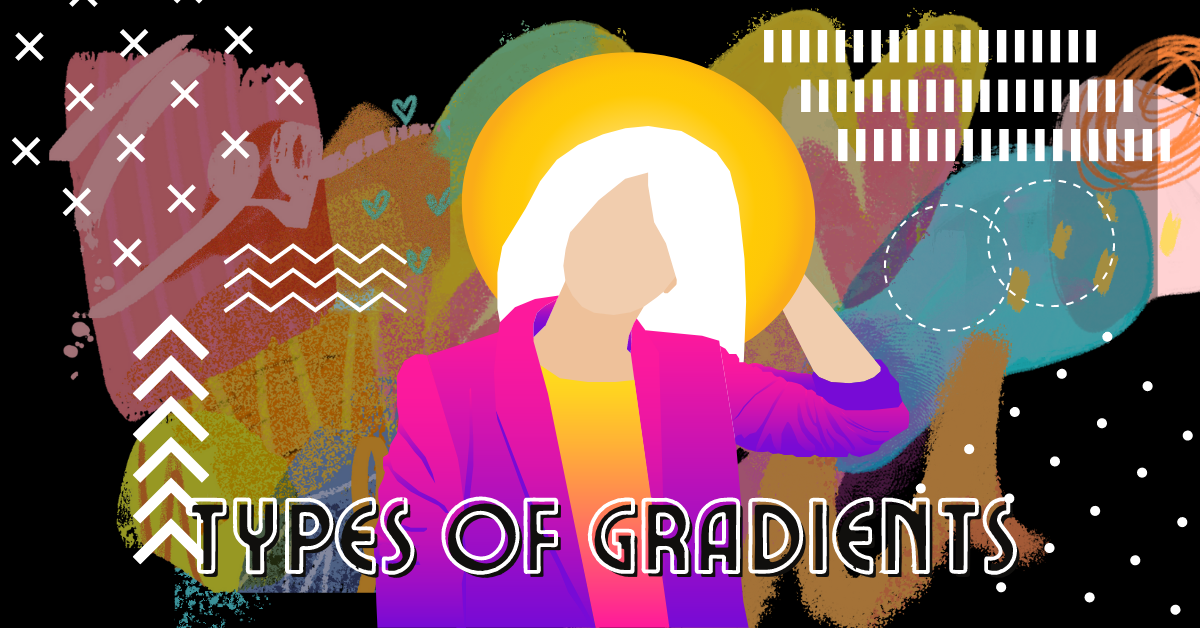Gradients are a design technique that can be used to create a smooth transition between two or more colors. They are widely popular in web design, especially with flat design styles that use bold and bright color combinations. There are many different types of gradients that you can use for your designs, including linear gradients (gradually changing colors along one axis), radial gradients (gradually changing colors from the center outwards), conical gradients (changing colors around an imaginary cone), and diamond-shaped graduations (a combination of both linear and radial).
Linear gradients
Linear gradients are the most common type of gradient. They are created by adding color stops to a line, which can be vertical or horizontal. Linear gradient can be applied horizontally or vertically on a flat surface and it’s often used for backgrounds in web design. There are multiple variations of linear gradients, but the most popular is two-color gradient that forms a smooth fade between two colors.
Radial gradients
Radial gradients have several different variations including radial-circular (gradually changing colors radiating outwards from center), radial-elliptical (radiating out in an elliptical shape) and angular gradients where each stop is on its own angle rather than being evenly spaced around the entire circle/ellipse.
Conical gradients
Conical gradients are very similar to linear gradients but they work along an imaginary cone that has it’s top at 0 degrees then gradually changes angles as you move down towards 180 degrees placing your final color at 90 degrees.
Diamond shaped gradients
Diamond shaped gradients try to combine both linear and radial gradients into one type by gradually changing colors from left to right and radially at the same time.
Tubular gradients
Tubular gradients work like a tube, starting out white in the center then transitioning through color towards black on either side of it. You can use any angles you want but using 0 degrees will be more like a conical gradient rather than tubular.
Concentric
Concentric is when each stop has its color going inward instead of being around outside edge with start/end points in a circle or ellipse shape as seen in radial-circular and radial-elliptical types above.
Reflected gradient
Reflected gradient can be applied to any surface and it’s similar to radial gradient except color circles are placed on opposite sides of center point. So if one circle has 50% white then other will have 100% black.
Circular gradient
Circular gradient works on a surface and it is similar to radial, but circles are placed in the same spot and they overlap. There’s three-color circular gradients where one side has white as foreground color while another has it as background color .
Angle gradient
Angle gradient is like a reflected gradient except it is placed at an angle. And there’s linear gradients which are used for drawing horizontal or vertical lines on surfaces with different colors meeting in the middle.
Understanding the different types of gradients can be quite interesting. They are all slightly different, but have one thing in common- they create a mood or evoke feelings that you may not expect. If you’re interested in learning more about this topic then head over to our blog at Artmeet where we’ll continue exploring the world of design!

